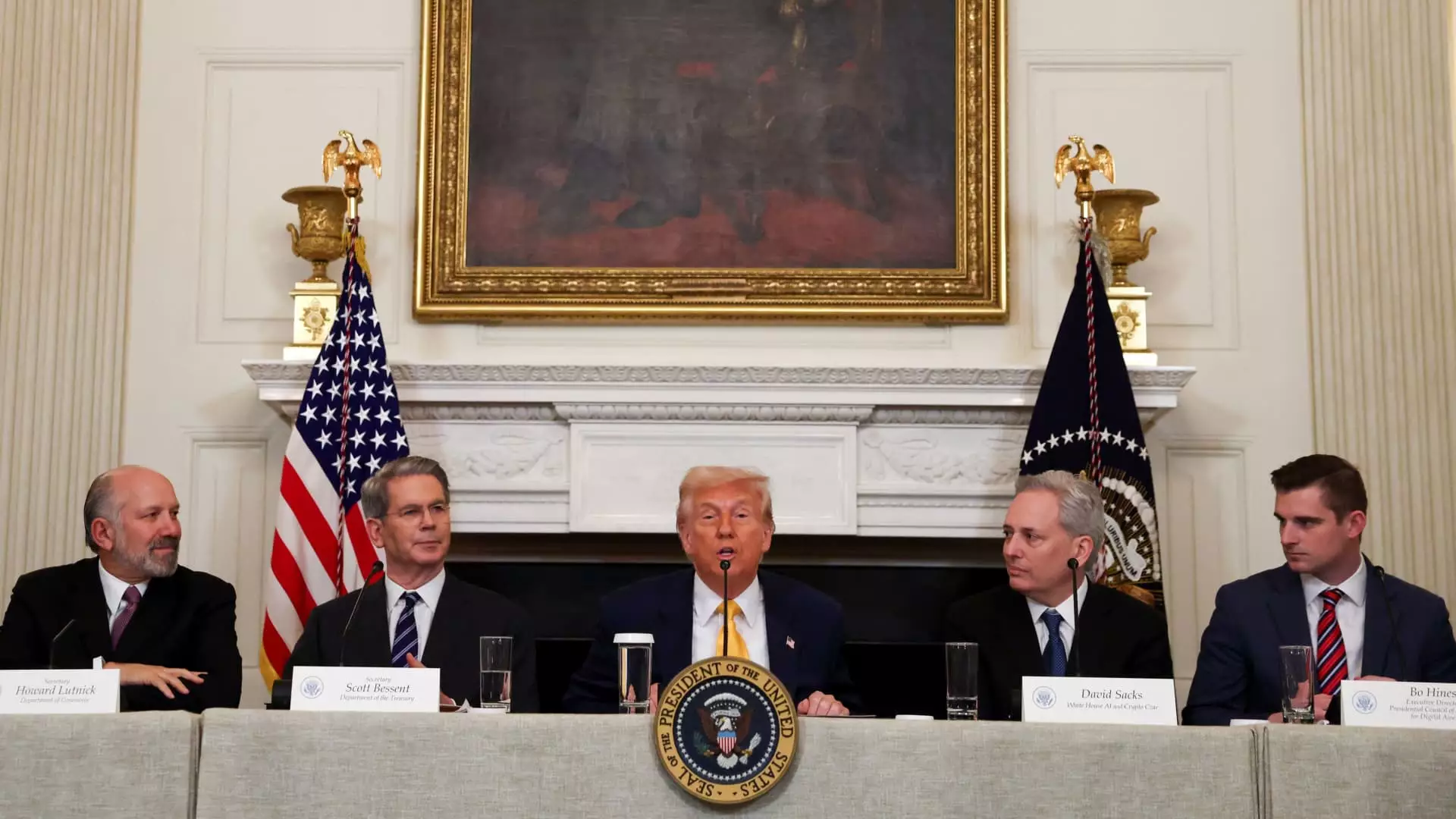At just 29 years old, Bo Hines epitomizes the clash of youth and ambition within one of America’s most contentious sectors—cryptocurrency. Despite having no formal background in the crypto world, Hines’ rapid ascension as a pivotal figure in the Trump administration’s digital asset strategy raises eyebrows and invites scrutiny. After earning his law degree from Wake Forest just three years ago and experiencing two unsuccessful bids for Congress in North Carolina, he now finds himself at the helm of President Trump’s crypto agenda, advocating for a transformative vision where the United States becomes the “crypto capital of the planet.” Is this just another case of political opportunities gone awry, or is there more to Hines’ trajectory than meets the eye?
From Football to Finance: A Controversial Journey
Before stepping into the political arena, Hines was known for his days as a wide receiver for North Carolina State University. An unexpected pivot into cryptocurrency post-varsity football raises questions about his qualifications. Hines claims an interest in digital assets started during his participation in the Bitcoin St. Petersburg Bowl back in 2014—a bold assertion that seems to reflect a desire for a connection to the zeitgeist of finance rather than well-honed expertise. His foray into crypto issues appears to be a calculated move rather than a lengthy evolution influenced by progressive knowledge and experience. His trajectory reflects the troubling tendency in politics where connections and charisma overshadow substantive understanding.
The Trump Connection: Endorsements and Authority
Hines has effectively positioned himself as Trump’s trusted advisor in a landscape that was previously marked by uncertainty and skepticism among crypto enthusiasts. With a public endorsement from Trump in the 2022 primary, Hines has leveraged this backing to propel himself into the spotlight, marching alongside David Sacks, a former venture capitalist now dubbed the White House ‘AI and Crypto Czar.’ The duo aims to promptly rewire crypto regulations, claiming they enjoy the President’s unwavering trust. But the question looms large: can a lack of experience navigate the intricate regulatory landscape that surrounds digital currencies and protect investments?
A Cautious Approach to Regulation
In his current role, Hines has indicated that the group he is part of aims to dismantle what some in the crypto community refer to as “Operation Choke Point 2.0,” a supposed crackdown on digital asset firms by traditional banking institutions. While Hines paints a picture of innocent entrepreneurs being victimized, there is an inherent risk in presenting a one-dimensional view of this complex financial environment. Could the aggressive push against regulatory oversight lead to a lack of necessary checks and balances, ultimately putting investors at risk for quick profits at the expense of thoughtful policy?
Bringing Bitcoin to the Forefront
As Hines and his team approach their 60-day milestone, they’ve proposed creative ideas such as radically revising IRS rules and advocating for a “Strategic Bitcoin Reserve.” By framing Bitcoin as “digital gold” worthy of acquisition for the American people, Hines employs powerful language to evoke an image of security and prosperity. Yet, a cautious observer might ask: who really benefits from this endeavor? Hines’ emphasis on budget-neutral purchases raises further questions about the accountability of using taxpayer assets to bolster a volatile digital asset.
A Conflicted Landscape
Interestingly, Hines has minimized concerns about potential conflicts of interest tied to Trump’s crypto endeavors. With the former president launching memecoins and other tokens, one has to wonder whether the administration’s approach is more about shoring up personal interests than making robust policy choices for the greater good. When Hines declares Trump’s engagement with crypto as an innocent act of citizenship, he risks downplaying the complex web of interests that often weave through politics and finance.
A Bipartisan Tonic for Tomorrow’s Dollar
Hines remains optimistic about Congressional support for the nascent but growing stablecoin legislation, claiming this could usher in a new era of U.S. dollar dominance. His enthusiasm is commendable; however, it exposes a naive belief that regulatory acclaim alone can tame the wild, unpredictable crypto waters. The bear still roams, and the pitfalls of overzealous legislation must not be glossed over. Hines’ childlike optimism warrants a more serious, balanced analysis to accompany the wild dreams he espouses.
As Bo Hines catapults himself into a significant role in navigating the murky waters of cryptocurrency policy, this young and ambitious figure must contend with the bounds of experience and expertise, all the while balancing the complexities of political interests and public trust. The battle lines are drawn, and the future of U.S. crypto regulation will inevitably depend not just on the vigor of ambitions but on the nuances that often get lost in the rush for a gold rush mentality.

